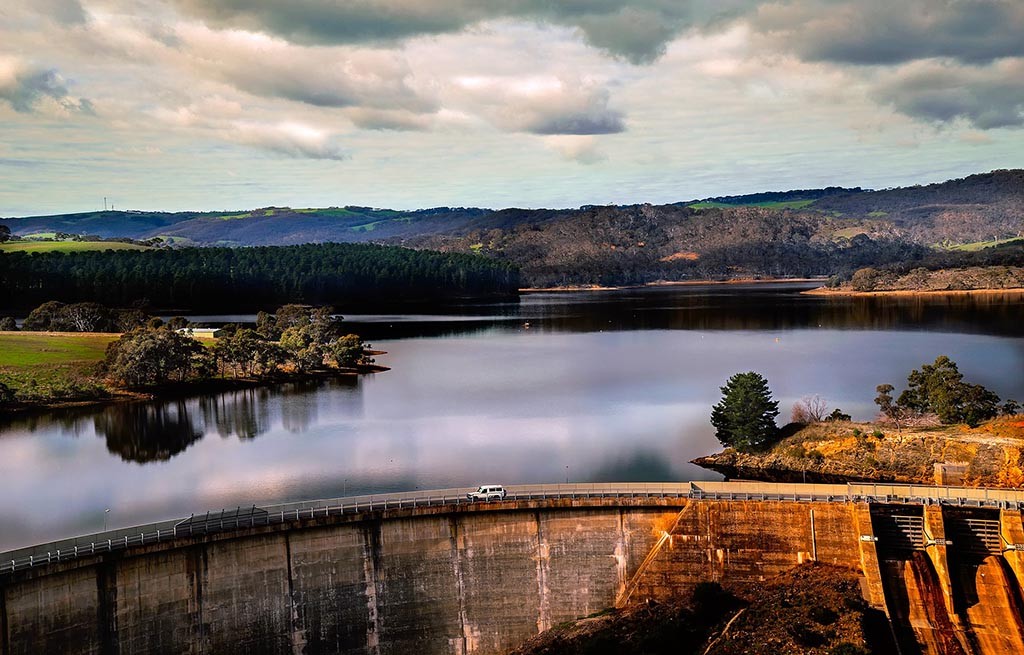As Sydney welcomes in a wet start to winter following the warmest autumn on record, dams and rivers across NSW saw small changes in water levels on the previous months data.
With 232 nights of temperatures over 12 degrees, the unusually warm autumn was quickly replaced by storms and heavy rainfall at the start of June.

Dam Levels Slightly Down
Total available storage levels in NSW dams in June saw a 1.9% decrease on the previous month’s data, with levels at the beginning of this month recorded at 84.9%.
Despite an overall decrease in levels, the majority of water storage facilities in NSW remain above 70% capacity, with the exception of storage at Fitzroy Falls (26.3%), Wingecarribee (50.8%) and the Blue Mountains (68.2%).
Cataract Damn, located between Sydney and the Illawarra, recorded storage levels of 79.8%, down 3.1% since May. Warragamba Dam, the largest water supply in Sydney, saw a minimal 1.7% change in levels down to 86.9%.
Tallowa Dam in the Shoalhaven was among the largest movers in the month, with storage down 7.5% to 71.6%. Full storage of this dam however refers only to the amount available for transfer to Sydney and the Illawarra, with other water supplied to local communities and river flows.
Avon Dam on the Illawarra Plateau meanwhile saw a 2.3% decrease, with current levels at 85.1%. While Woronora Dam in the Sutherland Shire recorded storage levels at 84.4%, down 1.7% since May.
Rivers and Lakes Report
Readings from the Murray River covering late May to early June showed Dartmouth Dam at 43% capacity, while the Hume Dam recorded lower storage levels at around 24%.
Lake Wetherell and Lake Tandure in the Menindee Lakes Water Storage Scheme averaged near 28% capacity at the end of the month, while the Menindee Lakes overall storage was at a low 3.5%.
On the North Coast the Toonumbar Dam sat at approximately 98% capacity, along with the Malpas Dam near Armidale at 73%.
Reports from the Bogan, Macquarie and Castlereagh Rivers meanwhile showed storage at Windamere Dam at 38%, Burrendong Dam at 10% and Oberon Dam averaging at around 51% storage.
Wet Start to June Forecast
River, dam, and lake levels are however expected to rise in the coming month, with heavy rainfall and king tides experienced in early June. Storms and heavy rainfall will no doubt lead to an increase in storage levels across the the state.
As Sydney Water and WaterNSW review storage levels across the state, local residents with rainwater storage tanks know that increased rain levels means more cost savings for their households.
With rainwater suitable for use in gardens, toilets or washing machines, having a storage tank installed can mean significant savings on household water bills.
NSW residents know that water security is an ongoing issue for the state, and understand the benefits of having sources of water available for emergencies or other supply interruptions. In case of water shortages or restrictions across the state, having an on-site supply of water can help households during these difficult times.
With years of experience in helping residents of Sydney’s North Shore and Northern Beaches install rainwater tanks, JEDI Plumbing can guide you on all aspects of tank installation and servicing, whether you’re looking to install a simple rainwater tank for garden usage, or an extensive system to run your washing machine or toilet.
If you’re looking for ways to save on your water bills, or you have any other plumbing needs, the JEDI Plumbing team is on hand to help. With 24 hours a day emergency plumbing service, give our friendly team a call today on 0411 774 381.